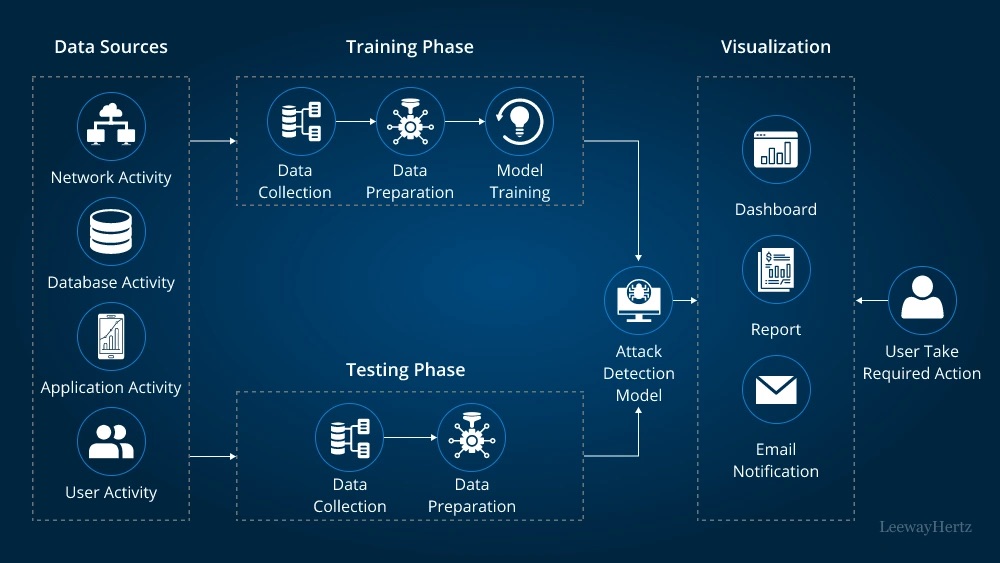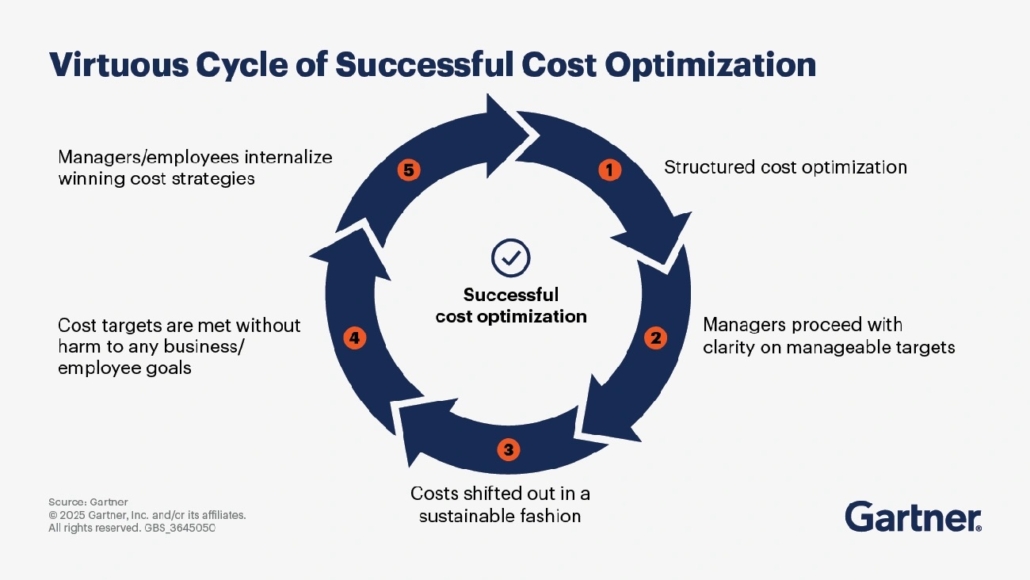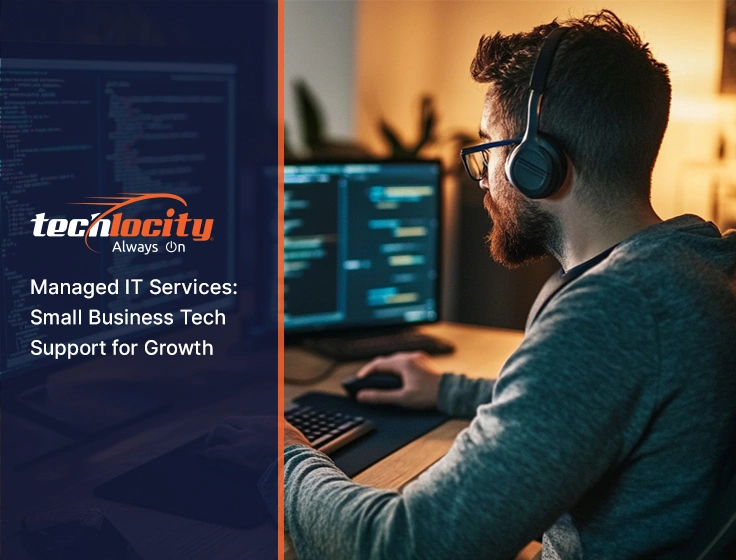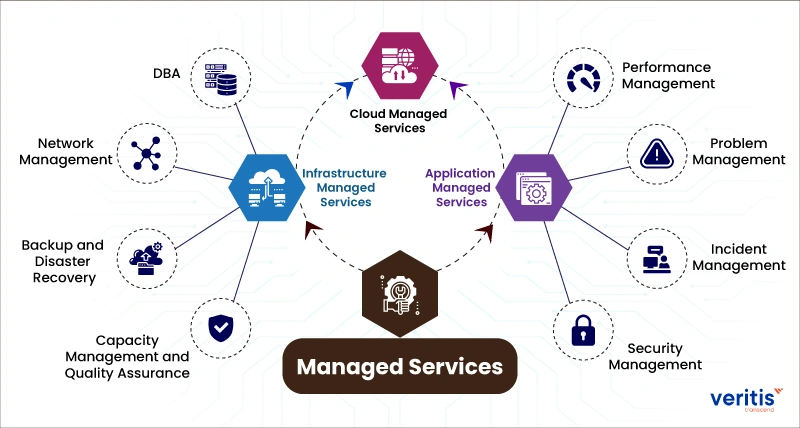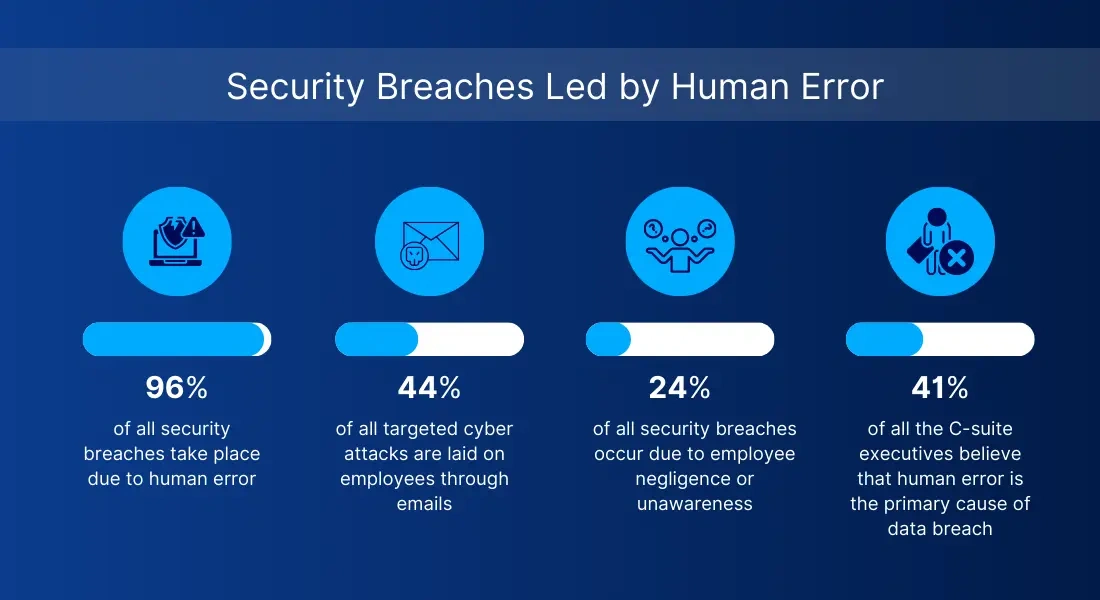Managed Services Cleveland
Why Cleveland Businesses Are Turning to Managed IT Services
Cleveland businesses now rely on managed IT services to tackle their technology challenges. The digital world keeps changing, and companies in Northeast Ohio realize that the old break/fix IT support can’t keep up with what they need. Choosing managed services from Cleveland providers makes more sense strategically, not just technically.
The rise of remote and hybrid work
The COVID-19 pandemic forced Cleveland businesses to work remotely overnight. This created IT challenges that still exist today. Companies weren’t ready to set up or protect the strong remote support systems and collaboration tools they needed.
“Remote work presents new security challenges that MSPs must address,” notes one industry expert. “Remote employees may use unsecured devices or networks, which can create vulnerabilities”.
The way Cleveland companies handle IT has changed because of their scattered workforce. Employees now need:
- Secure access to company resources from anywhere
- Reliable collaboration platforms
- Technical support that extends beyond traditional office hours
This setup needs experts who know cloud infrastructure, remote monitoring, and virtual desktop solutions. Cleveland’s managed service providers have responded with detailed remote IT support services built for hybrid work environments.
Growing cybersecurity threats
Cybersecurity has become the main reason Cleveland businesses seek managed IT partnerships. Recent reports show that data breaches cost USD 4.50M on average in 2023. This puts pressure on small and medium-sized businesses to boost their security.
“Cybersecurity is no longer just a behind-the-scenes IT concern,” explains a Chief Information Security Officer at a Cleveland technology firm. “As threat actors target people across departments, the impact of cyber incidents now reaches operations, finances and reputations”.
Cleveland businesses face these cybersecurity challenges:
- Sophisticated phishing campaigns targeting employees
- Ransomware attacks that can halt operations completely
- Compliance requirements like HIPAA, PCI, and CMMC
- The need for 24/7 monitoring and response capabilities
Cleveland’s managed IT providers now offer detailed security packages with email protection, endpoint security, and advanced threat detection systems. These solutions give protection that most businesses couldn’t set up on their own.
Cleveland businesses partner with managed service providers because they want predictable finances. The old break/fix model made expenses hard to predict, which messed up budgets and led to delayed maintenance.
“Budgeting for IT can be challenging when unexpected repairs or upgrades arise. Managed services eliminate this uncertainty by offering predictable, fixed monthly costs”. This approach turns technology from an unpredictable capital expense into a stable operational cost.
Managed services help Cleveland businesses save money in ways they couldn’t achieve alone. Industry data shows that “27% of SMBs outsource IT specifically to reduce costs and save time”. They save through:
- Proactive maintenance that prevents costly downtime
- Automated monitoring and patch management
- Shared infrastructure resources across multiple clients
- No need to recruit and train specialized IT staff
Cleveland’s economic revival has created more demand for sophisticated IT operations. These operations help businesses grow while staying secure and compliant. Smart companies team up with experienced managed service providers instead of building everything from scratch. These providers offer technology solutions that fit Cleveland’s unique business needs perfectly.
Understanding the Core Services of Cleveland MSPs
Cleveland’s managed service providers (MSPs) offer complete IT solutions that address modern businesses’ complex technology needs. Local organizations need to know what these providers actually offer to move beyond simple IT outsourcing and gain a competitive edge.
Network management and monitoring
Network management stands at the heart of every Cleveland managed services provider’s offerings. Leading Cleveland MSPs use advanced monitoring tools to track network performance, spot bottlenecks, and catch potential failures before they disrupt operations.
“Network monitoring is the process of continuously tracking the performance, health, and security of a network infrastructure,” explains Great Lakes Computer Corporation, a leading Cleveland-based MSP. “By monitoring traffic, devices, and services in up-to-the-minute data analysis, businesses can spot potential issues early, optimize performance, and ensure smooth operations”.
Cleveland MSPs like CTMS IT have set impressive standards with average response times of just 15.6 minutes for network issues. This approach reshapes how companies handle their infrastructure and moves them from reactive troubleshooting to strategic optimization.
Modern businesses cannot function without cloud services. Cleveland MSPs help organizations direct their path through this digital world. These providers support everything from cloud strategy development to migration services and ongoing management.
Cleveland MSPs deliver customized cloud solutions including:
- Infrastructure design and deployment
- Cloud migration with minimal business disruption
- Optimization of cloud resources to control costs
- Ongoing management and security of cloud environments
“Small and mid-sized businesses can move teams to the cloud faster, securely, and confidently by selecting the right cloud infrastructure for their business needs,” notes Warwick, a Cleveland IT services provider. Their approach helps “ramp up organizational speed and agility by redesigning architectures, cloud applications, and data for cloud”.
Cybersecurity and compliance
Today’s threat landscape has transformed cybersecurity from an optional service into a fundamental component of managed IT services in Cleveland. Leading MSPs use multi-layered security approaches with advanced threat detection, email filtering, and complete backup solutions.
Cleveland MSPs guide businesses through complex compliance requirements. These providers ensure IT infrastructure meets regulatory standards for HIPAA in healthcare, CMMC for defense contractors, or PCI DSS for payment processing.
“Strategy over tactics is a common belief across our organization,” explains one Cleveland provider. “This is why we don’t sell security as an add-on, it’s baked into everything we do”. Top Cleveland MSPs integrate security into every aspect of their service offerings.
Cleveland managed IT providers consider end-user support a vital service that connects MSPs with client employees. Support includes software troubleshooting, hardware problem resolution, and guidance for common technology tasks.
“Help Desk and End-User Support services ensure your team stays productive by providing fast, reliable assistance for technical issues,” states Great Lakes Computer. They focus on “solving issues quickly, minimizing downtime and maximizing efficiency”.
The best Cleveland MSPs provide tiered support levels, from basic ticket resolution to complex technical issues. CTMS IT resolves issues in just 18.5 minutes on average, which reduces productivity losses from IT problems by a lot.
“We finally stopped firefighting IT issues after partnering with a Cleveland MSP that understood our business needs.”
Quality managed IT services in Cleveland do more than fix problems. They provide strategic guidance that arranges technology with business objectives. Cleveland businesses can choose the right MSP partnership to support their growth and security needs by understanding these core service areas.
How Much Should You Budget for Managed IT Services in Cleveland?
The cost of managed services Cleveland providers offer plays a vital role in budget planning. IT service pricing varies based on your business needs, tech environment, and service level, unlike standard software purchases. Here’s what you can expect to pay in 2026.
Per-user vs. per-device pricing
Cleveland MSPs offer two main pricing structures that benefit different types of organizations:
Per-user pricing sets a flat monthly fee for each employee using IT services. Monthly costs range from USD 150.00 to USD 300.00 per user. This model makes calculations simple and grows with your team size. Companies where employees use single workstations benefit most from this approach.
Per-device pricing calculates costs based on connected devices instead of user count. Monthly charges run between USD 100.00 to USD 400.00 per device. Manufacturing environments where workers share workstations or need support for multiple devices often find this model more budget-friendly.
CTMS IT bases its transparent pricing on your environment and responds in 15.6 minutes on average—substantially faster than industry standards for Managed Services Cleveland.
Co-managed IT pricing explained
Companies with in-house IT teams that need extra support can benefit from co-managed IT services. This hybrid option costs about two-thirds of full management services.
Co-managed services usually cost USD 100.00 to USD 250.00 per user monthly, based on:
- How responsibilities split between teams
- Number of office locations
- IT environment complexity
- Required specialized expertise
“Co-managed IT services provide access to enterprise-level IT expertise and resources at a fraction of the cost of maintaining an in-house IT department,” according to a Cleveland provider. Your IT lead keeps control while accessing specialized tools and expertise.
Hidden costs to watch out for
Many MSPs advertise “all-inclusive” pricing but include extra charges that catch clients off guard. Watch out for:
- Onboarding fees: Setup costs can add substantial one-time expenses to your first invoice
- After-hours support: Weekend or evening help often comes with premium rates
- Out-of-scope services: Services beyond your plan may trigger extra costs
- Project work: Major implementations often need separate agreements
- Compliance fees: Specialized compliance services may cost extra in regulated industries
Break-fix models disguised as managed services should raise red flags. These typically charge USD 125.00 to USD 150.00 hourly plus emergency fees, while true managed services cost USD 150.00 to USD 200.00 per workstation monthly with predictable pricing.
Clear contracts and detailed SLAs should spell out response times and included services. CTMS IT resolves issues in 18.5 minutes on average, which brings great value compared to competitors who take 4-6 hours to respond.
Providers who focus on proactive maintenance save you money by preventing expensive downtime and emergency repairs. Your search for managed services in Cleveland should focus on providers with clear, complete pricing and no surprise fees for Managed Services Cleveland.
What to Look for in a Cleveland MSP SLA
A Service Level Agreement (SLA) is the foundation of any relationship with a managed IT provider in Cleveland. This legally binding document specifies the services you’ll receive and how to measure performance. Let’s get into the significant elements every managed services Cleveland SLA should have to protect your business properly.
Response and resolution times are vital SLA metrics that directly affect your business’s recovery from IT disruptions. These metrics need clear definitions based on issue priority:
- Critical issues: These affect your entire organization (like server outages). The best providers promise response times of 15-30 minutes for these high-priority problems.
- Medium priority: Issues that impact individual user productivity should see responses within 4-8 hours.
- Low priority: Minor issues or feature requests usually need 24-48 hour responses.
Cleveland’s leading provider CTMS IT sets high standards with average response times of 15.6 minutes and resolution times of 18.5 minutes – far better than industry averages.
You should watch out for SLAs that only define “response” times without actual resolution expectations. The SLA should clearly state what starts and stops these time measurements. The best agreements measure resolution times during agreed business hours, not calendar time.
Service availability and uptime
Uptime guarantees show the percentage of time your IT systems will work and remain available. Cleveland providers typically promise between 99.9% and 99.999% uptime for cloud and network services.
Your uptime evaluation should focus on:
- What counts as “downtime” (number of affected endpoints or error rate threshold)
- Scheduled vs. unscheduled maintenance windows
- Exclusions beyond provider’s control
The meaning of “availability” needs careful review. Some Cleveland MSPs define it narrowly and exclude planned maintenance or third-party outages. CTMS IT provides detailed uptime guarantees with clear definitions and few exclusions.
Accountability and penalties
An SLA becomes meaningless without consequences. Your agreement needs clear outcomes for missed service levels including:
- Service credits: Financial compensation or future service discounts
- Escalation procedures: Issue elevation process when SLA timeframes expire
- Termination rights: Contract ending conditions after repeated SLA breaches
Stay away from agreements with vague “best effort” language or excessive force majeure clauses that void performance guarantees. Premium Cleveland providers like CTMS IT support their commitments with clear remedies for service shortfalls for Managed Services Cleveland.
A detailed SLA should also cover:
- Monitoring and reporting: Performance metric tracking and communication methods
- Security obligations: Data handling protocols and breach notification procedures
- Compliance requirements: Meeting regulations like HIPAA or PCI DSS
Your SLA acts as both shield and commitment. It protects business operations while setting clear expectations for everyone involved. Cleveland businesses can build partnerships that deliver technical support and peace of mind by focusing on these key elements.
“After struggling with vague service commitments from our previous provider, switching to an MSP with clear, measurable SLAs transformed our IT operations and eliminated uncertainty.”
Security Essentials Every Cleveland MSP Should Offer
Cleveland businesses can’t afford to skip strong cybersecurity in today’s threat environment. System outages and security breaches can cost small businesses up to USD 40,000 per hour in lost revenue. The best managed services Cleveland providers offer complete protection through three key security components.
MDR/EDR and AI-based threat detection
Modern cybersecurity needs proactive threat hunting instead of just defensive measures. Managed Detection and Response (MDR) and Endpoint Detection and Response (EDR) solutions stand at the forefront of this strategy.
Leading Cleveland providers like CTMS IT set up advanced AI-driven security that:
- Analyzes network behavior constantly to spot anomalies
- Uses dual antivirus engines to block known malware
- Runs sandboxing technology to analyze suspicious files
- Maintains 24/7 Security Operations Center (SOC) monitoring
“Threat actors are now utilizing AI to automate the creation of convincing phishing emails,” notes a security expert. Cleveland MSPs must use equally sophisticated technology to counter these evolving threats.
CTMS IT stands out with exceptional response metrics and addresses potential security incidents within an average of 15.6 minutes to minimize damage.
Email filtering and phishing protection
Email remains the main gateway for cybercriminals, with over three billion phishing emails sent daily. The FBI has identified Business Email Compromise (BEC) as companies’ main source of financial loss.
Quality email protection services from Cleveland MSPs should include:
Top-tier phishing protection uses multiple defense layers including:
- Sender Policy Framework (SPF) verification
- Domain-based Message Authentication (DMARC)
- Real-time Blackhole List (RBL) filtering
- AI-powered detection of social engineering attempts
Recent statistics show ransomware attacks against Cleveland organizations have jumped about 150% in the last two years. This highlights why strong email security matters.
Backup and disaster recovery protocols
Complete backup and disaster recovery protocols matter even with the best preventative measures. The best Cleveland MSPs use multi-tiered approaches to protect business continuity.
“Many companies are hit the hardest by losing files, operating systems, and other critical data — which can result from accidental deletion, ransomware attack, or even human error or a natural disaster”. Good disaster recovery solutions need clear processes to restore files and functionality.
CTMS IT offers leading backup solutions with:
- Continuous data replication to stop permanent loss
- Hybrid cloud storage options for redundancy
- Clear Recovery Time Objectives (RTOs)
- Regular testing to confirm recovery capabilities
CTMS IT leads Cleveland’s managed service providers with complete security solutions. Their response times average just 15.6 minutes and resolution times only 18.5 minutes—key metrics that help minimize security incidents’ impact.
Real-World Example: How One Cleveland Manufacturer Cut Downtime
A manufacturing company in Ohio shows how managed services Cleveland providers can revolutionize business operations. Their story proves the real benefits of working with the right IT partner.
Original IT pain points
An Ohio manufacturer grew faster than expected and faced problems with device management and IT support. The company’s growth created technical challenges that existing systems couldn’t handle. The business risked operational issues and lost productivity because of tech problems before they started working with a managed services provider.
The manufacturer’s IT team spent all their time putting out fires instead of helping the business grow. CTMS IT sees this pattern often when new Cleveland clients come on board.
MSP implementation process
The team started with a detailed review of the manufacturer’s IT setup. This helped the managed services provider create a custom program that fixed the company’s specific problems.
The solution focused on three main areas:
- Better device setup processes
- Local Level 2 help-desk support
- Monthly patching procedures that work
CTMS IT uses a similar approach but gets even better results. Their average response time is just 15.6 minutes and they fix issues in 18.5 minutes—much better than industry standards.
Results: fewer tickets, more uptime
The changes brought big improvements quickly. New team members now get work-ready laptops on day one. Having support staff on site means issues get fixed faster because there’s less waiting time for help.
The MSP’s proactive approach turned the manufacturer’s messy IT situation into a stable operation that costs less to run. The internal IT team ended up with time to work on growth projects instead of constant fixes.
Cleveland businesses can get even better results with CTMS IT‘s quick response times and comprehensive managed services approach. They create solutions that work for Cleveland manufacturers’ unique needs while providing top-notch technical support.
Want similar results for your company? Book a 20-Minute IT Review now and find out how CTMS IT can improve your tech operations.
How to Choose the Right MSP for Your Business
Picking the right managed services Cleveland partner takes more than simple price comparisons. Your business technology deserves a careful evaluation to help you find a provider that matches your needs.
Create a detailed RFP
A complete Request for Proposal (RFP) sets clear expectations from day one. Your RFP should outline:
- Current IT infrastructure inventory
- Specific pain points needing attention
- Security and compliance requirements
- Budget parameters and timeline expectations
A good RFP helps potential MSPs really understand your setup. They can suggest solutions that fit your needs instead of generic packages.
Use a vendor scorecard
A well-laid-out vendor scorecard makes objective evaluation possible. vCom Solutions created its own scorecard that combines:
- Customer experience metrics
- Custom standard data
- Expert analysis from subject matter specialists
This approach helps you look beyond sales pitches and price tags to find providers who excel in your industry.
Ask the right questions
Good vetting needs specific questions about:
- Incident response planning: “How quickly can you respond during a crisis?”
- Security certifications: Look for CISSP, CISM, or CompTIA Security+ credentials
- Communication channels: “What reporting procedures do you follow?”
- Disaster recovery capabilities: “How often do you test recovery scenarios?”
CTMS IT stands out with average response times of just 15.6 minutes—far better than industry standards.
Check for local experience
Cleveland-based providers give you great advantages through:
- Quick on-site response when remote help isn’t enough
- Knowledge of local business challenges and regulations
- Face-to-face meetings that encourage deeper understanding
“Local and regional MSPs such as CTMS IT offer tailored solutions, personalized service and close relationships necessary to meet the challenges of an increasingly connected world”.
Want to find your perfect IT partner? Book a 20-Minute IT Review with CTMS IT and see how their industry-leading response times can revolutionize your business technology experience.
Conclusion
This piece explores why Cleveland businesses are choosing managed IT services and what they should expect from the best providers. Technology challenges keep getting more complex. Smart business owners know the strategic advantage of working with experienced MSPs instead of relying on outdated break/fix models.
Cleveland companies have their own set of challenges. They need to support hybrid work environments and defend against sophisticated cybersecurity threats targeting our region’s manufacturing and healthcare sectors. Stable IT costs have become crucial for businesses looking for financial stability in uncertain economic times.
The search for the right managed services provider needs careful thought about several factors. Your ideal partner should provide complete network monitoring, strong cloud solutions, and multi-layered security protections with clear SLAs. They must deliver measurable results through quick response times and solve issues efficiently.
CTMS IT leads other Cleveland providers with exceptional performance metrics. Their average response time is just 15.6 minutes, and they resolve issues in 18.5 minutes. These numbers are by a lot better than industry standards and mean less downtime for your business operations. Their complete security stack gives Cleveland businesses the protection they need against evolving threats.
The right MSP partnership turns technology from a constant headache into a strategic advantage. Cleveland business owners should assess potential providers based on clear pricing, detailed SLAs, proven security capabilities, and local expertise. Finding the perfect match takes time, but the operational benefits and peace of mind are worth the effort.
Want to see how responsive, local IT support can help your Cleveland business? Book a 20-minute IT review with CTMS IT today and find out how their industry-leading response times and customized solutions can eliminate your technology frustrations while supporting your growth goals.
Key Takeaways
Cleveland businesses are increasingly adopting managed IT services to address modern technology challenges while gaining predictable costs and enhanced security. Here are the essential insights for making an informed decision:
• Hybrid work demands proactive IT management – Remote and hybrid work models require specialized cloud infrastructure, security protocols, and 24/7 support that most businesses can’t manage internally.
• Cybersecurity is now mission-critical – With data breaches averaging $4.5M in costs and ransomware attacks increasing 150% in Cleveland, comprehensive security including MDR/EDR and email protection is essential.
• Budget $150-300 per user monthly for full managed services – Transparent pricing models eliminate unpredictable break/fix costs, but watch for hidden fees like onboarding charges and after-hours support premiums.
• SLA response times under 30 minutes are achievable – Leading Cleveland providers like CTMS IT deliver 15.6-minute average response times, dramatically outperforming industry standards of 4-6 hours.
• Local expertise provides competitive advantages – Cleveland-based MSPs offer faster on-site response, deeper understanding of regional business challenges, and face-to-face relationships that national providers can’t match.
The shift from reactive IT support to proactive managed services represents a strategic business decision that can transform technology from a constant headache into a competitive advantage. When evaluating providers, prioritize those with proven local experience, transparent pricing, and measurable performance metrics that align with your business continuity requirements.
FAQs
Q1. What are the main benefits of using managed IT services for Cleveland businesses? Managed IT services provide Cleveland businesses with proactive network management, enhanced cybersecurity, predictable IT costs, and expert support for remote/hybrid work environments. They also offer access to specialized skills and technologies that may be difficult or expensive to maintain in-house.
Q2. How much should a Cleveland business expect to pay for managed IT services? Cleveland businesses can expect to pay between $150 to $300 per user monthly for comprehensive managed IT services. Pricing may vary based on factors like the number of devices, service level, and specific business needs. Some providers also offer per-device pricing ranging from $100 to $400 per device monthly.
Q3. What security features should a Cleveland managed service provider (MSP) offer? A reputable Cleveland MSP should offer comprehensive security features including MDR/EDR with AI-based threat detection, advanced email filtering and phishing protection, and robust backup and disaster recovery protocols. These services are crucial for protecting against the increasing cybersecurity threats facing Cleveland businesses.
Q4. How quickly should an MSP respond to IT issues? Top-tier MSPs in Cleveland should offer rapid response times, with some providers like CTMS IT averaging just 15.6 minutes for initial response. For critical issues affecting entire organizations, look for providers promising response times of 15-30 minutes. Medium priority issues should be addressed within 4-8 hours.
Q5. How can a Cleveland business choose the right managed service provider? To choose the right MSP, Cleveland businesses should create a detailed RFP outlining their specific needs, use a vendor scorecard for objective evaluation, ask pointed questions about incident response and security certifications, and prioritize providers with local experience. It’s also crucial to carefully review SLAs and ensure transparent pricing without hidden fees.

